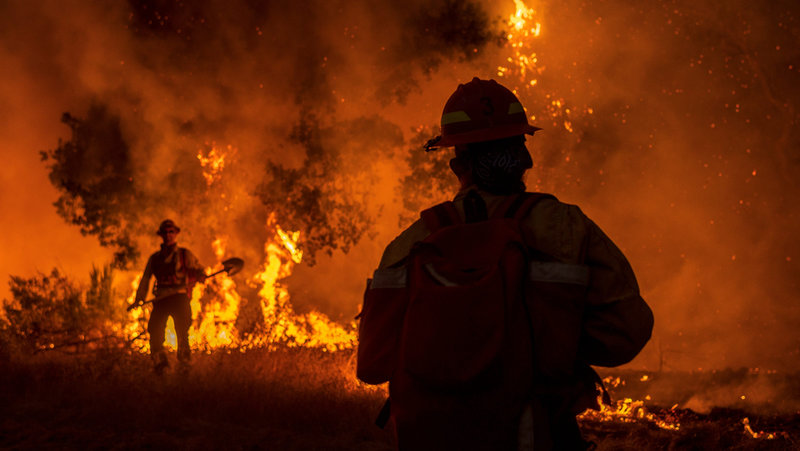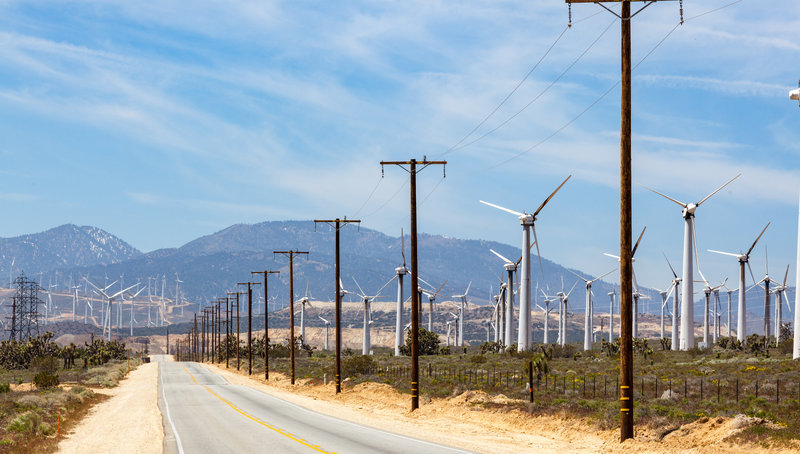Wildfires, blackouts, and restabilising California’s electric grid with LF Energy
Wildfires have led to rolling blackouts in California, with critics blaming green energy for stretching grid capacity, something clean energy advocates adamantly deny. Julian Turner talks to LF Energy executive director Shuli Goodman about restabilising California’s power grid and securing the state’s clean energy future.
Shuli Goodman is executive director at LF Energy, which is committed to accelerating the transition to a 100% decarbonised, distributed clean energy grid through open source collaboration. Prior to joining the organisation in January 2017, Goodman worked as a management consultant, as a senior manager at Deloitte Consulting, and as director of information architecture at consultancy Sapient.
Julian Turner: Could you tell me a bit more about Aggreko’s hybrid modular power systems that rely both on solar and gas generation?
Shuli Goodman: The problems with the blackouts in August were social-technical and software related. Europe has been addressing similar issues for quite a while with regards to balancing the grid across (national) markets and in environments with high penetration of renewables. Much of the software is open source and freely available, but in California we seem reluctant to accept the possibility that a market like Europe could substantially help the state.
One of LF Energy’s newest members is Statnet, the Norwegian transmission system operator that manages thousands of miles of lines over harsh and remote areas. It has what is probably one of the world’s most sophisticated drone and sensor programmes.
Again, I offered utilities the opportunity to learn from the Norwegians about how they are managing and lessons learned, but there was no response. As a Californian it is hard to watch.

Wildfires that began in August have devastated millions of acres of land across the state of California. Credit: Stratos Brilakis/Shutterstock.com
What has been the human cost of the wildfires and blackouts to communities and businesses?
People all over California are experiencing the devastating effects of climate change – businesses suffer from the destruction of their buildings, people lose their homes. If we can’t run away from the effects of climate change, then we have to face them head-on.
The investments we make now to fix the damage to our environment will take years to see to fruition. However, if we don’t take unified action swiftly, the consequences of climate change will consume the world. Oceans will rise, fires will spread, and land will be lost. The number of climate refugees could also skyrocket in the US.
Critics have blamed California’s blackouts on renewable energy stretching the power grid’s capacity. How do you respond?
There was a brief moment when that was considered to be the fault, but it has largely been refuted. This had nothing to do with the specific characteristics of the high-penetration of renewables on to the grid. This had to do with a network operator that lost situational awareness and did not have an accurate view of supply and demand. They made the wrong call.
The main issue is the incorrect perception that California’s aggressive energy transition and movement to renewables has caused the chain effect of events. In actuality, the exceptionally high electricity demand for air conditioning resulting from the region-wide heat wave not only increases pressure on the demand side, but also stresses generators, reducing plant efficiency and output.
Californian investor-owned utilities (IOU) have long deferred the sort of work that now needs to be done with regards to the wildfires and transmission/distribution lines. Instead of burying the wires in high-danger areas, we continue to limp along and incur tremendous technical debt and loss of life. It may be more expensive to bury the lines in Sonoma County, which has had repeated catastrophic fire events for the last five years, than to use the blunt instrument of power shut-offs as a remedy.
The cost in terms of loss of life and destruction of property will, in the end, be far greater than burying the wires. Climate change requires long-term infrastructure investments.

California gets more than 30% of its electricity from renewable sources, primarily solar and wind.
Have efforts to integrate and modernise US power grids failed and if so, why?
The environment created by the outgoing administration has been hostile to aspects of grid modernisation; however, there are also historical issues at play.
The failure to recognise behind-the-meter systems, for example, is simple accounting – who gets paid for saving? If a household must use 20% more energy because they do not have energy-efficient windows and insulation, then in essence, you have utilities and hydro-carbon supply-chains that are rewarded. These are exactly the perverse incentives that keep systems from rapidly changing at a time when we need to move at the speed of technology. We must come up with rates that reward consumers for not using energy, for avoiding costs.
The present grid system is inflexible, making it difficult to use highly variable renewable resources. Flexibility services will ultimately be as important as generation capacity in a low inertia grid.
What must consumers, government agencies, and grid operators now do to prevent future power blackouts?
Governments must set immediate policies that address long-term effects of climate change – a longer bureaucratic process is nothing compared to the state of the world if we let this happen. Ideally, there should be a financial mechanism such as carbon taxes or a carbon credit market.
Because system operators represent a natural monopoly, they have been regulated and dominated by incumbent hardware vendors, which have a vested interest in slowing interoperability, which is suffocating innovation and slowing scaling.
If you speak to nearly any system operator, they will all share how they feel held hostage by their vendors. The only way to shift this is if end-users – utilities and commercial and industrial customers – finally say no to black boxes.
Lastly, individuals need to vote with their dollars; it’s kind of a non-brainer. If you fundamentally shift where you are voting with your dollars every day, then you are positively affecting climate change. The more active individuals are in communicating, the more effective change is.

The California Energy Commission sees long-duration storage as key to stabilising the grid and recently selected four energy storage projects that use vanadium flow batteries, similar to these in China. Credit: Invinity
Are you optimistic about the future of renewable power in California and throughout the US?
Long-term, I am optimistic. Short-term, the regulators, the IOUs, and the regional transmission organisation need to have a profound shift in consciousness. The future will not be solved with the same mindset that created the grid; we have to do this together, in collaboration, with shared investment.
Software-defined infrastructure is the future, there will not be a ‘forklift’ software platform. We are moving into a cloud-native world with micro-services, fast rapid iterations, and open source. That is the value and benefit of LF Energy.
In order for the US government to achieve a solution to reduce the risks of future wildfires/blackouts and replenish California’s environment, listening to the scientists and data regarding climate change is a crucial first step. Without acknowledgement, global warming and climate change will lead us to an irreversible fate of environmental destruction.
Main image: Shuli Goodman, executive director at LF Energy. Credit: LF Energy
Q&A | INFRASTRUCTURE